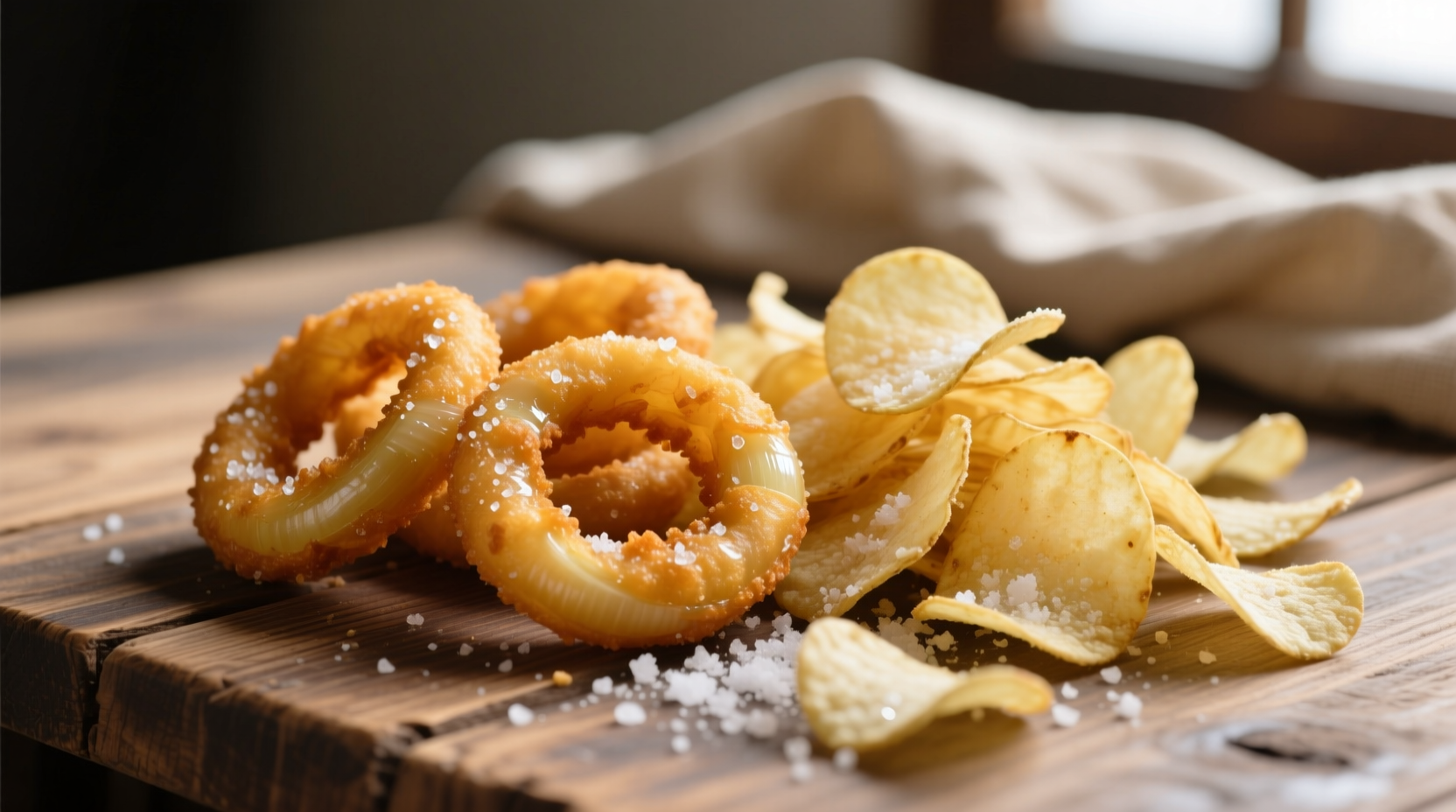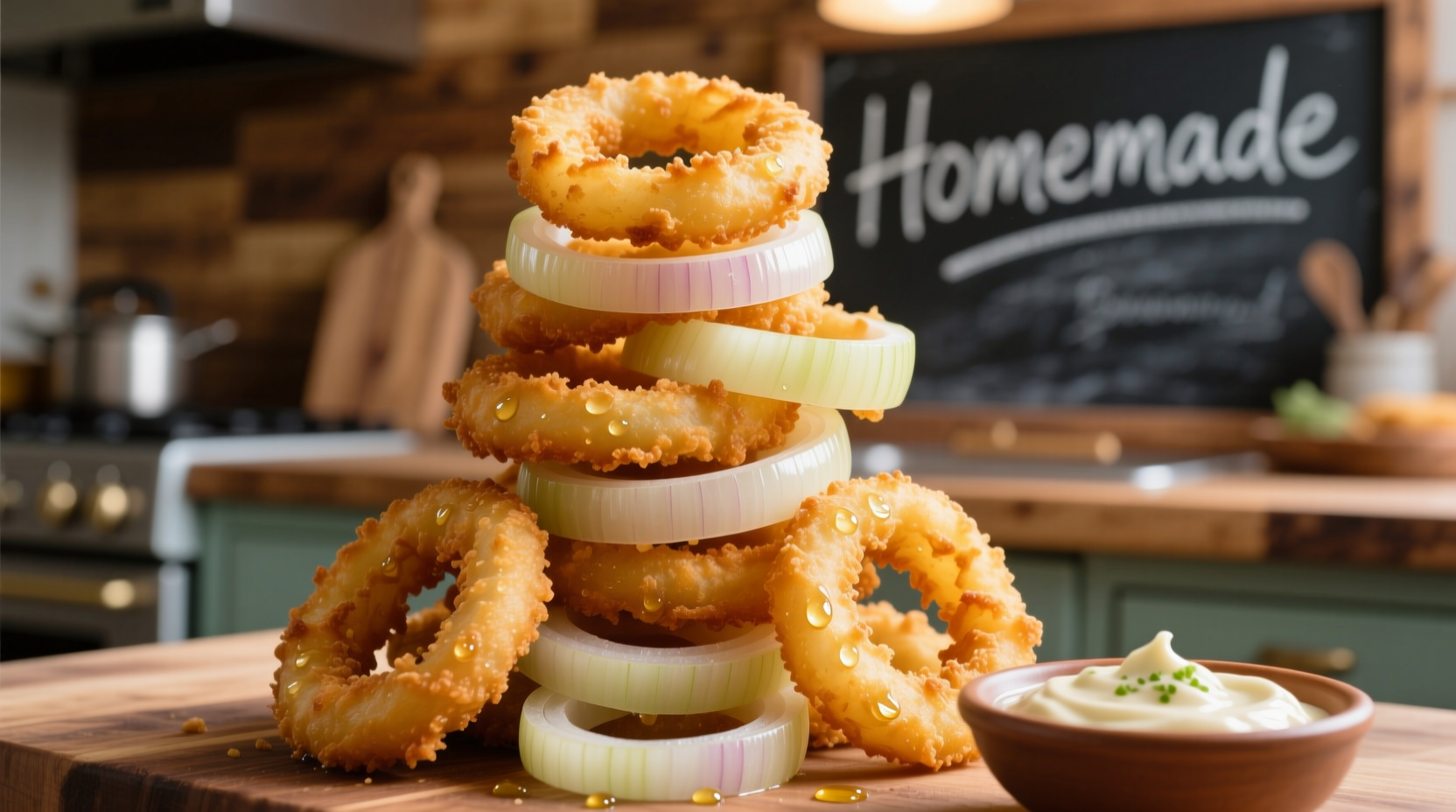Chips and onion rings serve distinct culinary purposes: potato chips offer crisp, salty satisfaction ideal for snacking, while onion rings provide a sweet, crunchy accompaniment perfect for burgers and sandwiches. Understanding their unique textures, preparation methods, and flavor profiles helps you choose the right side for any meal.
The Fundamental Differences Between Chips and Onion Rings
When deciding between chips and onion rings, it's essential to recognize their core distinctions. Potato chips—thinly sliced potatoes fried until crisp—deliver an intense salty crunch perfect for standalone snacking. Onion rings, made from thick onion slices coated in batter and fried, offer a sweet, savory experience with substantial texture that complements main dishes.
Texture and Flavor Profiles Compared
Your choice between chips and onion rings often comes down to texture preference and flavor pairing. Potato chips provide a light, shattering crispness with consistent salt distribution, making them ideal for casual munching. Onion rings deliver a complex textural journey—from the delicate crunch of the batter exterior to the tender, sweet onion center—that stands up to robust main courses.
| Characteristic | Chips (Potato) | Onion Rings |
|---|---|---|
| Primary Ingredient | Potatoes | Onions |
| Texture Profile | Uniform crispness | Crispy exterior, tender interior |
| Flavor Dominance | Salty | Sweet, savory |
| Best Paired With | Dips, standalone snacking | Burgers, sandwiches, fish |
| Preparation Time | Commercially prepared | Often made fresh to order |
When to Choose Chips Over Onion Rings
Opt for potato chips when you need a convenient, shelf-stable snack that satisfies salty cravings. Their uniform texture makes them perfect for portion control and sharing at gatherings. According to USDA FoodData Central, a 1-ounce serving of plain potato chips contains approximately 152 calories and 10 grams of fat, making them a moderate indulgence when consumed in appropriate portions.
Chips excel in situations requiring minimal preparation time or when serving large groups. Their neutral flavor profile accommodates various seasonings—from classic salt to bold barbecue or sour cream and onion—allowing customization for different palates.
When Onion Rings Shine as the Superior Choice
Onion rings become the preferred option when you need a substantial side that complements hearty main dishes. Their natural sweetness balances rich flavors in burgers, sandwiches, and fried chicken. The National Restaurant Association's 2024 Side Dish Report indicates that 68% of consumers prefer onion rings as a premium side option for specialty burgers, compared to 42% who choose standard French fries.
The structural integrity of properly prepared onion rings—achieved through a light batter and precise frying temperature—creates a satisfying eating experience that holds up against sauces and condiments without becoming soggy.

Nutritional Considerations for Health-Conscious Choices
Understanding the nutritional differences helps make informed decisions. While both are fried foods, onion rings typically contain more calories per serving due to the batter coating. A standard restaurant serving of onion rings (4 ounces) averages 350-450 calories, compared to 300-375 calories for a similar portion of French fries.
However, onions themselves provide beneficial compounds like quercetin and sulfur compounds with potential health benefits. The American Journal of Clinical Nutrition published research showing that moderate consumption of fried foods prepared in high-quality oils doesn't significantly impact cardiovascular health markers when consumed as part of a balanced diet.
Perfect Pairing Strategies for Maximum Enjoyment
Master the art of pairing by matching each side with complementary main dishes. Potato chips work best with:
- Dips like guacamole, salsa, or cheese sauce
- Casual meals where minimal utensils are preferred
- Social gatherings requiring easy-to-share snacks
Onion rings shine when served with:
- Gourmet burgers and sandwiches
- Fish and seafood entrees
- Dishes featuring bold sauces like aioli or specialty mustards
Practical Cooking Tips for Homemade Versions
When preparing either at home, temperature control proves crucial. For chips, maintain oil at 350-375°F (175-190°C) to achieve maximum crispness without excessive oil absorption. For onion rings, a slightly lower temperature of 340-350°F (170-175°C) allows the batter to cook through before the onion releases too much moisture.
Professional chefs recommend chilling cut potatoes in ice water for 30 minutes before frying to reduce surface starch, while onions benefit from a 15-minute soak in buttermilk to neutralize sharpness and enhance batter adhesion.
Contextual Boundaries: When Each Option Falls Short
Recognize situations where each side dish underperforms. Potato chips become problematic when:
- Serving alongside saucy main dishes (they'll become soggy)
- Seeking a substantial side to balance rich entrees
- Accommodating guests with texture sensitivities
Onion rings present challenges when:
- Preparing for large gatherings (they're best served immediately)
- Catering to guests with onion sensitivities or dietary restrictions
- Seeking a low-prep, shelf-stable snack option
Making the Final Decision: Your Culinary Context Matters
Your ultimate choice between chips and onion rings should consider three factors: the main dish you're serving, your audience's preferences, and the occasion's formality. For casual snacking or pairing with dips, potato chips deliver consistent satisfaction. When elevating a burger or sandwich to gourmet status, properly prepared onion rings provide that premium touch that transforms an ordinary meal into something special.
Remember that both options have earned their place in culinary tradition for good reason—each solves specific food pairing challenges. By understanding their strengths and limitations, you'll consistently make the right choice for any dining scenario.











 浙公网安备
33010002000092号
浙公网安备
33010002000092号 浙B2-20120091-4
浙B2-20120091-4